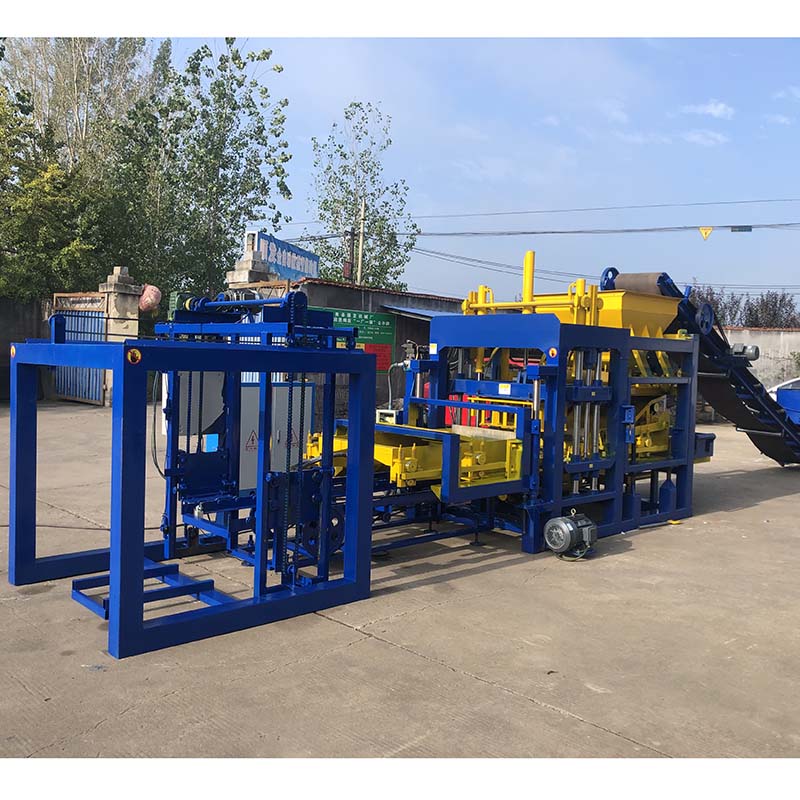
Image source: Aiwei Block Machine
Introduction
The construction industry has undergone significant advancements in recent years, with automation playing a crucial role in improving efficiency and productivity. One area where automation has made a substantial impact is in brick making machines. Modern brick making machines incorporate advanced automation technologies that have revolutionized the traditional brick manufacturing process. In this article, we will explore the role of automation in modern brick making machines and the benefits it brings to the construction industry.
Traditional Brick Making Process
Before delving into the role of automation, it is essential to understand the traditional brick making process. Traditionally, bricks were made by hand, requiring a considerable amount of labor and time. The process involved several steps, including clay preparation, molding, drying, and firing.
Clay preparation involved mixing clay, water, and other additives to achieve the desired consistency. The mixture was then poured into molds, manually shaped, and compacted. After molding, the bricks were left to dry under the sun, a process that could take several days depending on weather conditions. Finally, the dried bricks were stacked in a kiln and subjected to high temperatures to undergo firing, resulting in a finished product.
Introduction of Automation in Brick Making Machines
Automation in brick making machines has transformed the entire manufacturing process, making it faster, more efficient, and less labor-intensive. The introduction of automation technologies has enabled brick manufacturers to scale up production, enhance product quality, and reduce costs.
Modern brick making machines incorporate various automated features, including:
Automated Clay Mixing
In traditional brick making, clay preparation required manual mixing, which was time-consuming and labor-intensive. With automation, brick making machines now have automated clay mixing systems. These systems precisely measure and mix the clay, water, and additives in the correct proportions, ensuring consistency and eliminating human error.
Automated clay mixing not only saves time but also improves the quality of bricks. The homogeneous mixture ensures uniformity in each brick, resulting in stronger and more durable structures.
Automated Molding
The molding process in traditional brick making involved manual labor, with workers shaping and compacting the clay mixture into molds. Automation has replaced manual molding with automated systems that streamline the process.
Modern brick making machines utilize robotic arms or hydraulic presses to mold the clay mixture into bricks. These systems ensure consistent and precise molding, resulting in bricks with uniform dimensions and better structural integrity. Automated molding significantly increases the production capacity of brick making machines, as it eliminates the need for human intervention at this stage.
Automated Drying
Drying is a critical step in the brick making process, as it removes excess moisture from the bricks and prepares them for firing. In traditional brick making, the drying process relied on natural sunlight, which was unpredictable and time-consuming.
Automation has introduced innovative drying technologies in brick making machines. These technologies include automated drying chambers or tunnels equipped with controlled heating and ventilation systems. The automated drying process ensures uniform drying of bricks, regardless of external weather conditions. This consistency improves the overall quality of the bricks and reduces the drying time, leading to faster production cycles.
Automated Firing
Firing is the final step in brick manufacturing, where the dried bricks are subjected to high temperatures in kilns. Automation has significantly enhanced the firing process, making it more efficient and controllable.
Modern brick making machines employ automated firing systems that regulate temperature, airflow, and combustion processes. These systems ensure precise control over firing conditions, resulting in bricks with consistent strength and durability. Furthermore, automated firing reduces energy consumption and greenhouse gas emissions, making the process more environmentally friendly.
Benefits of Automation in Brick Making Machines
The integration of automation technologies in brick making machines offers numerous benefits to both brick manufacturers and the construction industry as a whole. Some of the key advantages include:
Increased Production Capacity
Automation enables brick making machines to produce bricks at a significantly higher rate compared to traditional methods. The elimination of manual labor and the introduction of streamlined automated processes lead to increased production capacity. This increased efficiency allows manufacturers to meet growing demands in the construction industry and complete projects in shorter timeframes.
Improved Product Quality
Automation ensures consistency and precision in every step of the brick making process. From clay mixing to molding, drying, and firing, automated systems maintain strict control over various parameters, resulting in bricks with superior quality. The uniformity in size, shape, and strength of the bricks enhances structural integrity and reduces wastage on construction sites.
Enhanced Worker Safety
Automated brick making machines significantly reduce the physical strain and risks associated with manual labor. Workers are no longer exposed to repetitive tasks, heavy lifting, or hazardous conditions. This leads to a safer working environment and reduces the occurrence of work-related injuries. Automated machines also provide safety features such as emergency stop buttons and advanced sensors to prevent accidents.
Cost Savings
While the initial investment in automated brick making machines may be higher, the long-term cost savings are significant. Automation reduces labor costs by minimizing the workforce required for brick manufacturing. Moreover, the improved efficiency and production capacity result in economies of scale, reducing the overall cost per brick. Additionally, automation optimizes resource utilization, such as clay and energy, further reducing operational expenses.
Sustainable Manufacturing Practices
Automation in brick making machines promotes sustainable manufacturing practices. The precise control over processes, such as clay mixing, drying, and firing, minimizes material wastage and reduces energy consumption. The use of advanced firing systems also leads to lower greenhouse gas emissions, making brick manufacturing more environmentally friendly.
Conclusion
Automation has revolutionized the brick manufacturing process, making it faster, more efficient, and sustainable. Modern brick making machines with automated features have significantly increased production capacity, improved product quality, enhanced worker safety, and resulted in cost savings for manufacturers. As the construction industry continues to evolve, automation will play an increasingly vital role in meeting the growing demands for bricks while ensuring higher standards of quality and sustainability.
